KJ Callihan
The Amazing Health Benefits of Parsley Tea
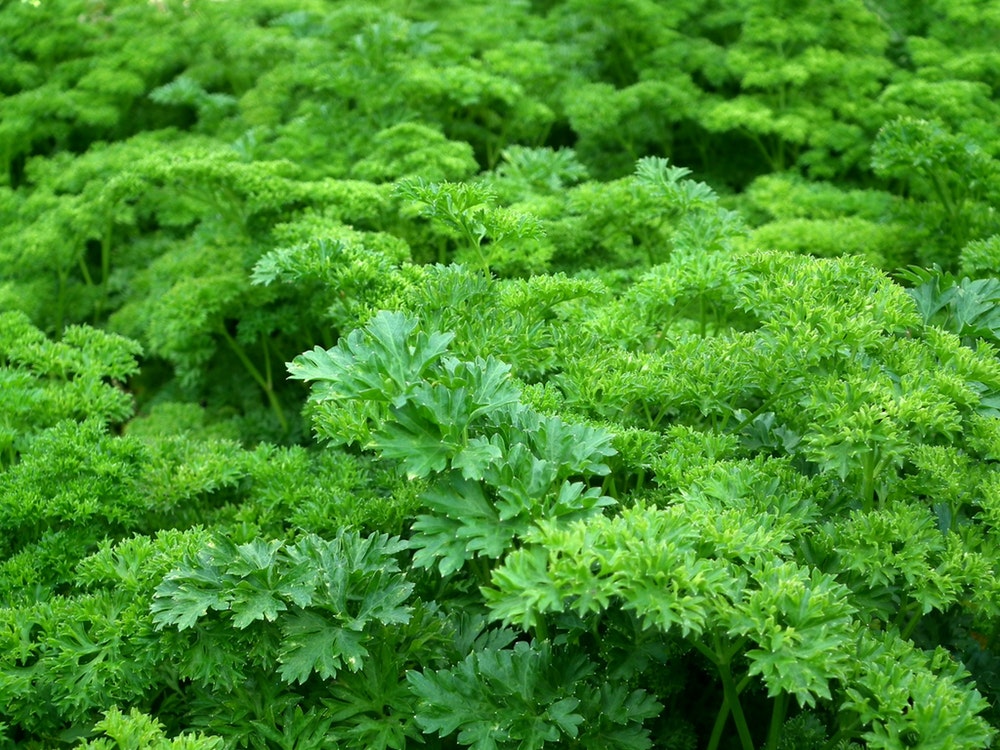
Have you ever tried parsley tea? Turns out its one of a bevy of healthy new items making their way into health food stores and homes across the nation. But what’s the point of it? Well, aside from its traditional uses as a garnish for prettying up dinner plates and as an occasional chew for freshening the breath (due to its chlorophyll content), parsley is packed full of nutrients and has a slew of other uses as well as being a lesser known herbal detoxifying tea. Let’s check it out!
Petroselinum crispus
From the Greek word for “rock celery” (as it is indeed a relative of the celery plant) comes parsley, or Petroselium crispus. It was also associated in ancient Greece with Persephone, the Goddess of the Underworld. Found in produce departments globally, parsley comes in two varieties most commonly, the curly parsley plant and the flat leaf, or Italian parsley plant.
Parsley has been used throughout much of history
As both a religious symbol and medicinal herb, parsley has been used in funerals, burials, and religious ceremonies over the ages. This versatile herb has been found not only in medicinals, but cosmetics, soaps and perfumes of the old world as well.
Full of antioxidants and anti-inflammatory
Parsley is optimally immune-system enhancing with its various components, the most remarkable of which make it a “chemo-protective” food. Capable of neutralizing carcinogens like those found in cigarette smoke, the oils in parsley, especially the myristin, inhibits tumor formation in animal studies, particularly in the lungs. The oils comprising parsley are called volatile oils, and include not only myristin but limonene, eugenol, and alpha-thujene, as well as flavonoids such as luetolin, apigenin, crisoeriol, and apiin. Luteolin in particular fights as an antioxidant in the body to prevent damage to cells, as does the vitamin C and vitamin A which destroy free radicals responsible for asthma, cervical cancer and colon cancer, artherosclerosis, and diabetes. As an anti-inflammatory, vitamin C helps to provide protection from osteoarthritis and rheumatoid arthritis. It’s also high in vitamins B, E, and K, as well as magnesium, phosphorous, iron, calcium, and potassium. You can also drink parsley tea to soothe a cough from the common cold or other minor ailments.
Ensures proper cell division and cardiovascular health
Parsley’s folic acid content makes it a great nutrient for protecting cardiovascular health and assuring proper cell division (particularly useful in the colon and cervix, both areas of the body with rapidly dividing cells) and its potassium gives it a noteworthy diuretic effect on the body.
Assists in regulating monthly menstrual cycles
The apiol in parsley is a component of the female sex hormone estrogen as well, and it has been used for hundreds of years in the regulating of monthly women’s cycles as well as continue uterine contractions following delivery. For this reason, parsley should not be ingested by pregnant women.
Supports kidney, bladder, and urinary function
Known for its ability to prevent salt from being reabsorbed into body tissues and effectiveness in ridding the kidney, bladder, and liver of debris, parsley is used for kidney, bladder and urinary conditions prevalently with the current German authority equal to the U. S. FDA approving it for the treatment of bladder infections and kidney stones. It has not been shown to be effective in treating serious kidney inflammation, however.
Let’s have some tea!
If you’re ready to try the tea, no special ingredients are necessary! Just a little fresh parsley (the green leaves of the parsley are used for tea, and these are best harvested during spring and fall), some boiling water and a cup with a strainer, infusion ball, or reusable tea bags. All you need to do is get your water boiling, take about a 1/4 cup of fresh parsley in a strainer (or other) and steep for 5 – 7 minutes. Stir in honey or lemon to taste and you’ve got it!
Keep in mind there are some side effects of parsley tea, just as there are for any other medicine.
Discontinue drinking the tea if these issues arise (and always stay within the recommended dosage per your doctor or packaging instructions):
*Low blood sugar (this tea can cause your blood sugar to drop, which is not the best thing for everyone.) If you have diabetes, consult your physician prior to usage and carefully monitor your sugar levels.
*Anemia, kidney or liver problems (these can usually be avoided by staying within the prescribed amount of dosage)
*Avoid if pregnant
*Do not drink if breastfeeding unless prescribed by a doctor
*Do not drink if your health history includes serious kidney inflammation disease, as kidney stones may form from the oxalic acid
*Do not drink if you are on diuretic drugs, if you are having surgery of any kind in the next two weeks, or if you are on blood-clotting drugs.
The Sacred Yoni Connection

What is Yoni?
According to Wikipedia, yoni translates to mean “womb”, “uterus”, “vagina”, “vulva”, “source”, “sacred space”, or “abode” in Sanskrit, and is, in its pictorial state, a “stylized representation of female genitalia representing the goddess Shakti in Hinduism. Within Shaivism, the sect dedicated to the god Shiva, the yoni symbolises his consort. The male counterpart of the yoni is the lingam. The union of the yoni and lingam represents the eternal process of creation and regeneration, the union of male and female principles, and all existence. In art and sculpture, this union is represented by a cylinder (lingam, often interpreted as a stylised phallus) resting within a spouted dish (yoni).”
Shiva and Shakti
In a further description, the Sanskrit term for the symbolic representation of feminine power is yoni, which is synonymous with the Hindu Goddess Shakti. The creative power, an aspect of the shiva linga, is also represented by Shiva and Shakti. At the base of the linga is yoni, symbolic for the female sex organ. The union of shiva linga represents the creative energies of both combined. Parts of the divine duo include Shiva, which symbolizes consciousness and the masculine principle, and Shakti, the activating power and energy, as well as the feminine principle. Yoni is considered to be symbolic for the divine mother or divine force, with Tantric texts calling it the source of life itself. And just as the Tantra regards yoni as divine power, Shiva, the god of destruction, is only all-powerful when he is present beside Shakti, the source of life and creation.
The Seat of Female Sexual Power
In her book,”A Woman’s Dictionary of Symbols and Sacred Objects,” Barbara Gordon Walker describes, “The signs of the yoni was meant to convey the shape of the external female genitalia, which the ancients clearly recognized as the seat of female sexual power. Tantrics viewed that power as the source of all creative action. Far from describing female sexuality as “passive” in the Western manner, Tantric Hindus regarded female orgasm as the energizing principle of the universe.”
There are over 8 million yoni forms
And also according to the Tantra, the origin of life, or yoni, is also a term used to refer to a form of life or a species. Within over 8 million yoni forms is the human species form of the manushya yoni, which is given according to good karma (or sufficient good deeds/living) after moving through assorted other forms like fish, insect, rabbit, dog, deer, etc. The opposite, negative or bad karma, leads to reincarnation into an evil form called raksha yoni.Continuous births and rebirths occur in various yonis, eventually ending with enlightenment or Mokshya, which ends reincarnation and allows the human to join Brahma, or the Hindu creator god.
The concept and purpose of yoni massage
For many in Tantric Yoga school, yoni is nothing new. Neither is the concept of yoni massage, since the yoni “holds emotionand tension and it can be helpful to have these released.” Such endeavors can be most helpful to women who have endured sexual trauma and responded with suppressed sexual energy. For this reason, beginning sessions may be emotional due to the suppressed feelings which are being touched upon and accessed during the process. Pressure points within the yoni are involved as well, with some being pleasurable and others not so much, requiring pressure to be released. Aside from the pressure points, the G spot, A spot, Kundalini spot, and cervix are also accessed during yoni massage. While some women find the procedure to be simply tension-relieving, others may find they have orgasms during the massage. This is not unusual and is most often useful in bringing about the desired re-connection to sexuality needed and deserved by the massage recipient. Another popular way to re-connect with yoni and heal the body is the practice of the ancient yoni steam bath, often done for detoxification, fertility, menstrual pain/discomfort alleviation and other health purposes.
Healing the yoni and re-energizing the woman
With the premise of healing the yoni, or sexuality of the woman, tantra combines the wisdom of several ancient traditions including not only Hinduism but Buddhism, Native American spirituality, and Sufism to create a series of healing and/or re-energizing ceremonies or therapeutic sessions. Essentially, this type of session heals the recipient’s sexuality through the combined wisdom and building of sacred connection through intentional breathing, movement, energy, and moves the life force through the chakras to open and/or re-energize them.
How to Maximize Your Methylation

Have you ever heard of methylation? It’s time you did. After all, it’s the key to healthy aging, and we are all aging, no matter our age.
Dr. Mark Hyman explains that methylation is “a key biochemical process that is essential for the proper function of almost all of your body’s systems. It occurs billions of times every second; it helps repair your DNA on a daily basis…and…To keep methylation running smoothly you need optimal levels of B vitamins. Without enough B vitamins methylation breaks down, and the results can be catastrophic. In some cases we see birth defects like spina bifida, Down’s syndrome, and miscarriage. [You are also] at higher risk for conditions like osteoporosis, diabetes, cervical dysplasia and cancer, colon cancer, lung cancer, depression, pediatric cognitive dysfunction, and cardiovascular disease.”
The solution? Maximizing your Methylation
DNA, the code of life, is controlled by the biochemical process of methylation. In order to maintain this process, we must ensure we are avoiding things that break down the process. And according to Dr. Andrew Rostenberg, we need to optimize our genes by optimizing our methylation pathways. This can be done by ensuring we take in the proper nutrients, in this case primarily certain B vitamins.
How is this done?
Essentially, we need to eat plenty of leafy greens, whole grains, fruits, and beans. In addition, we need to pay specific attention to our vitamin B6 and B12 intake, ensuring that we take in enough fats – in the form of oily fish, egg yolks, meats, and liver – but not too much animal protein (it can lead to increased homocysteine, which you don’t want).
Minimize things that up the homocysteine levels and lower B vitamin absorption
However, too much of certain things deplete the B vitamins by raising homocysteine levels, such as excess sugar, saturated fat, alcohol, animal protein, as mentioned above, and caffeine. Smoking, of course, must be ceased immediately, as it causes the B6 vitamin to become inactive. Additionally, certain medications should be stopped or limited (consult your physician before stopping any medication) if they are contributing to diminished B vitamin absorption, such as Dilantin, oral contraceptives, acid blockers, and others.
Monitor age-related or other life and bodily changes that can impact the methylation process
As we age, certain processes contribute to the poor absorption of B vitamins, and should be monitored, like a possible reduction in stomach acid, digestive diseases, and allergies to various foods. Other conditions naturally do the same, like hypothyroidism, toxic exposure that limit vitamin production, kidney failure and pregnancy.
Get checked by your doctor!
To find out how your methylation process is doing, consult your doctor for tests on your blood count (anemia and large red blood cells indicate insufficient methylation), serum/urinary methylmalonic acid, homocysteine, and urinary amino acids. Once these are established, it’s time to maximize your methylation!
Get enough of the green stuff!
Eat at least a cup daily of kale, spinach, mustard, collard or beet greens, bok choy, escarole, and others. These are easily the best options to guarantee optimal methylation (and it’s handy because they’re generally on the list of foods needed to optimize just about every other healthy bodily process too!)
Go for the B’s!
Vitamin B6 and12, as well as folate, can be found in dark leafy greens (again!), whole grains, almonds, asparagus, liver, cheese, walnuts, beans, eggs, fish, wheat germ, and sunflower seeds.
Cut the crap!
Limit meats (minimize animal protein of all kinds), decrease all saturated fats, and keep all sugars to a minimum. Kick the caffeine, reduce alcohol consumption (no more than 3 drinks per week, regardless of type), and get rid of the cigarettes entirely – pronto! Knock out as much of the processed foods and snacks as you possibly can and be sure you’re taking probiotics to enhance your gut health. Herbal digestive bitters and HCI supplements are helpful, as well as antioxidant supplements and ensuring you’re taking in sufficient magnesium and zinc.
Make sure you’re getting enough – and ask your doctor what to do if you’re not
Monitor your intake carefully. Folate, Vitamin B6, Vitamin B12, and betaine should be taken at amounts sufficient for your dietary needs. If you have trouble absorbing B12, see if you can get B12 injections at your doctor’s office.
*Please contact your physician before changing your diet or trying any of the health-related remedies discussed in my articles.
SIBO Symptoms and Common Treatments
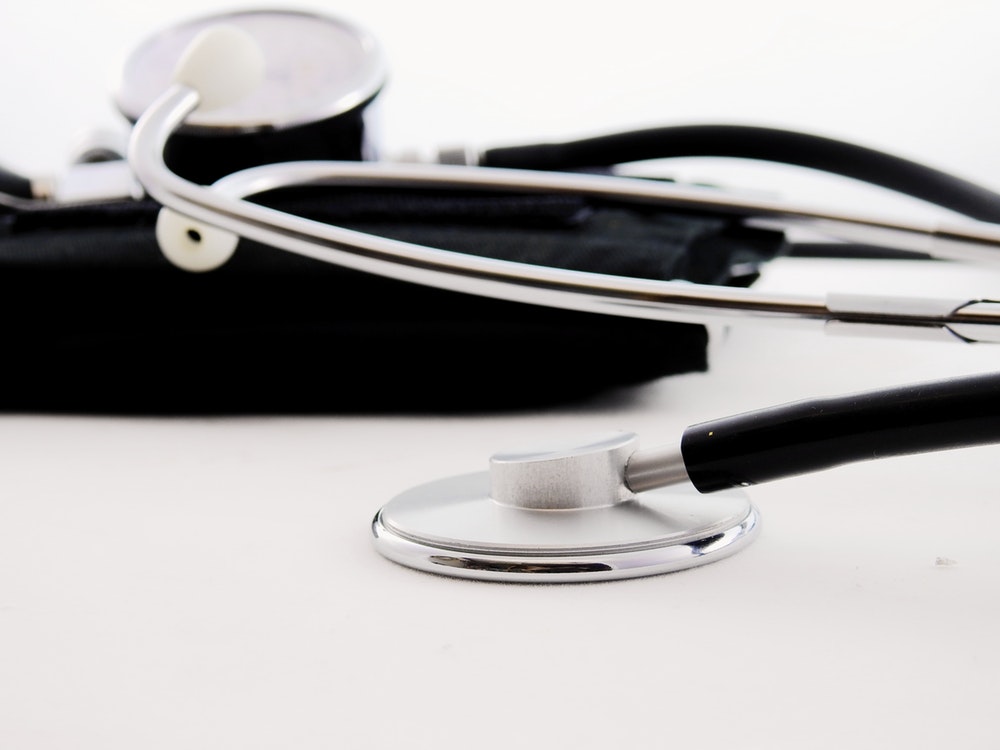
According to the SIBOinfo.com website, SIBO is: Small Intestine Bacterial Overgrowth, defined most concisely as “a chronic bacterial infection of the small intestine.The infection is of bacteria that normally live in the gastrointestinal tract but have abnormally overgrown in a location not meant for so many bacteria.”
The site, managed by Dr. Allison Siebecker, is intended to share research and information with fellow doctors and anyone else interested in SIBO, and to help empower people in their health.
In summary of the site’s explanation of SIBO, bacteria interfere with normal, healthy digestion by consuming part of our food (their favorite nutrients are B12 and iron), leading to deficiencies which can cause anemia. Damage to the intestinal lining causes some food to be unable to get absorbed, and the bacteria eat that too – which leads to more of them and a continuing cycle of bacterial overgrowth. When they eat our food, they also produce their own gas in our SI which in turn leads to excess gas of our own (belching and flatulence), bloating, pain, diarrhea, or constipation.
They also interfere with proper fat absorption due to a process of deconjugation which also leads to deficiences of certain vitamins and fat in stools. Since larger food particles can get into the body through the damaged lining, the immune system reacts to it and allergies and food sensitivities begin as a result. To make matters worse, the bacteria themselves can get into the bloodstream, causing immune reactions which lead to chronic fatigue, pain and a heavy liver burden. The acids excreted by the bacteria can also cause cognitive problems and neurological symptoms.
Food Matters concurs with most of this, adding that SIBO is often grouped with similar disorders like candida, leaky gut, and/or dysbiosis. SIBO is distinct, according to Yuri Elkaim, as it only affects the small intestine. When the bacteria from the colon somehow ends up in the small intestine, the problem begins for small intestine bacterial overgrowth, says Elkaim.
Since the small intestine’s job is to absorb nutrients like vitamins and minerals, it gets overwhelmed by bacteria that perform digestive processes. The whole situation is problematic, primarily because essential nutrients may not be absorbed. Deficiencies, allergies, and unwanted weight loss can result, as well as possible permanent damage to cells and autoimmune disorders.
So what can be done?
Well, for starters, if you have any of these symptoms (or those previously mentioned), follow through on recommended treatment options.
If you’re experiencing:
the inability to gain weight in spite of greater caloric intake, unusual acne, new food sensitivities, dramatic, unexplained, or unwanted weight loss, chronic diarrhea (not related to consuming a certain food), chronic fatigue, vomiting/nausea, muscle weakness, carbohydrate sensitivity, or vitamin/mineral deficiencies, you should consider getting tested (usually a hydrogen breath test can confirm the presence of such bacteria) and treating in one of the following ways:
The essential objective is to encourage optimal levels of beneficial bacteria while simultaneously ceasing to eat the foods the bacteria crave. Simply put, we want to starve them out and replace them.
But how’s that done?
Most traditional Western physicians and gastroenterologist prefer prescribing antibiotics. Normally highly effective at killing of unwanted overgrown bacteria, Rifaximin or Neomycin are typically prescribed. However, many SIBO sufferers prefer not to take antibiotics, and instead to use a dietary remedy alone. This is most often done as follows:
First, ingest enough probiotics. Take a probiotic supplement, eat fermented foods like coconut kefir and coconut milk (not dairy) yogurt, and sauerkraut.
Meanwhile, eliminate all sugars and sweeteners. Also eliminate starchy carb foods like breads, sweet potatoes and white potatoes. Also no other starchy vegetables and no lactose may be consumed. Follow additional dietary directives here.
You’ll also want to supplement any nutrients your body has become deficient in by either taking a multi-vitamin or upping your healthy fats, leafy greens, and non-starchy veggies.
Certain herbs may also be beneficial in the form of tinctures or capsules such as lemon balm, dill seed, berberine, skullcap, or licorice root. These, Elkaim states, when properly used in combination with the dietary protocol, might be as effective as antibiotics in SIBO treatment.
Additional forms of treatment include starving out the bacteria while feeding the person only with Elemental Meals. These are medical foods which are in powder or liquid form, are pre-digested and full of easily absorbed nutrients. These are used for anyone afflicted with conditions associated with GI condition patients needing nutritional support while allowing digestive processes to rest.
The Weirdly Effective “Wet Sock Treatment”
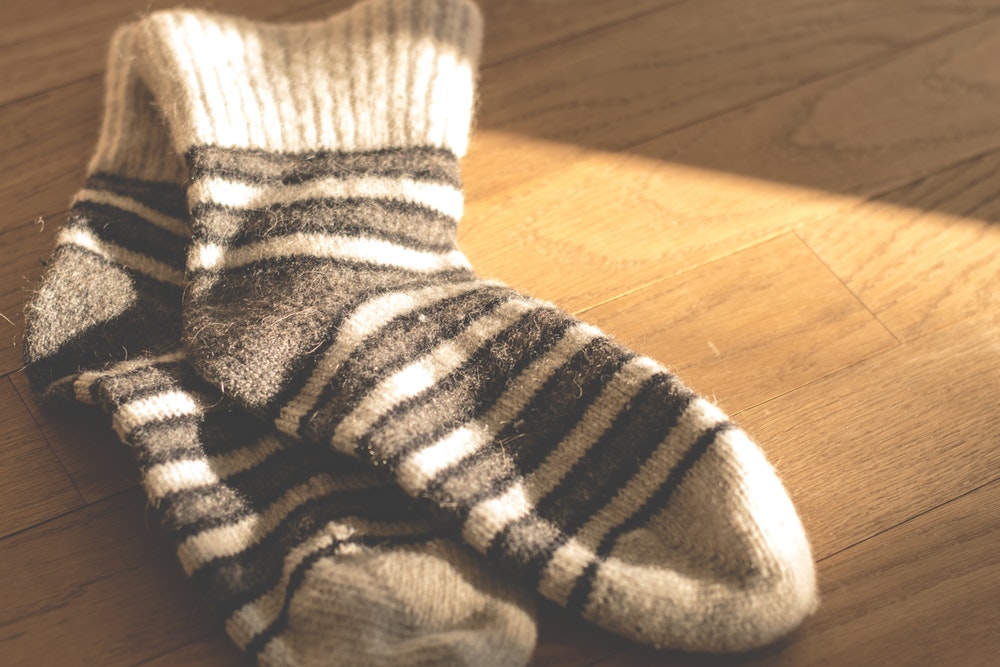
Sometimes it’s the weirdest-sounding treatments that actually end up working the best.
Take the “wet sock treatment” for instance. Known as one of naturopathy’s most effective cures for the common cold (it’s also been said to be effective for ear infections, migraines, insomnia, and chronic cold hands and feet), the wet sock treatment asks you to do the opposite of what you might think – to get your feet cold, not warm, and wet, not dry.
But why?
Well, it’s explained as essentially a factor of homeostasis. Since your body wants that state of equilibrium, putting wet, cold socks on your feet causes blood to rush to the area to warm it up. When this occurs, your circulation gets moving differently, blood passes through your lymph nodes, and your immune system gets a boost. More often than not, you’ll wake up feeling much better than when you went to bed.
This is especially true if you’re congested. Also referred to as the “cold sock treatment,” it’s considered hydrotherapy which is remarkably effective at clearing nasal congestion at night. According to some sources, it works better than most store-bought or prescribed medications as well. As described above, the stimulated immune system, most notably of the upper respiratory tract in particular, gets busy clearing things out and makes for a better night’s sleep free of access mucus.
Another practitioner explains it slightly differently. Dr. Katie Carazzo states that once you fall asleep, the blood vessels in your feet “will constrict as your feet cool down, which sends all the good nutrients into your organs and tissues. These nutrients are needed to fight off infections and stimulate healing. Then your feet will start to warm up again, and your vessels will dilate to release the heat. This is when the junk in your tissues is dumped into your blood stream so that your body can dispose of it. The alternating of hot and cold creates a pumping mechanism that stimulates your circulation and lymphatics. The results are an active immune system and decreased congestion. By the morning, your socks will be completely dry.”
It’s found to be helpful in relieving most common colds, earaches, sinus infections, and sore throats. It’s safe to use on anyone of any age from infants to the most elderly, although more serious ailments should consult a physician first and foremost before attempting any home remedy.
Here’s what one website says you’ll need:
A bucket or bath tub
Small towel
Cotton socks (one thin pair and one thick pair, if possible)
Your refrigerator
Now before you get ready for bed, get your thin socks completely wet, sopping wet, in fact, and place them in the refrigerator. The thick socks stay dry. While the thin socks chill, draw hot water into your bath tub or small bucket to soak your feet – make it as hot as possible while still comfortable enough to submerge your feet in. Don’t burn yourself! Let your feet soak for 15 20 minutes. Then dry them off with a towel. Now place your refrigerated wet, cold socks onto your warm feet. Then place the thick, dry socks on over them.
Now keep them on, and get into bed and go to sleep. You’ll feel your feet start to warm up and you slip under the covers, and as you drift off to sleep, your body will get working on the homeostasis it desires and the immunity-boosting you need. You’ll feel noticeably better in the morning (although if you’re still awake, you should notice congestion relief within approximately 30 minutes). This treatment can be repeated up to 3 nights if necessary.
While the method is widely considered to be effective, some hesitate to call it a “cure” for the common cold. Although it works well in most cases, one treatment is not likely to be enough unless you have just noticed your symptoms beginning and done the treatment immediately the first night. Others insist it must be accompanied by Vicks or similar Vaporub, while still more believe it only works in combination with other things, as “just one method in your natural medicine chest”, such as drinking extra fluids, getting extra sleep, taking additional immune system-boosting vitamins like C, D, E, and A, garlic and zinc.
Please note: consult your physician before trying any home remedies or natural healing treatments on any of my articles. Also, please do not attempt the wet sock treatment if you have any open wounds on your feet.
The Restorative Benefits of the Red Reishi Mushroom
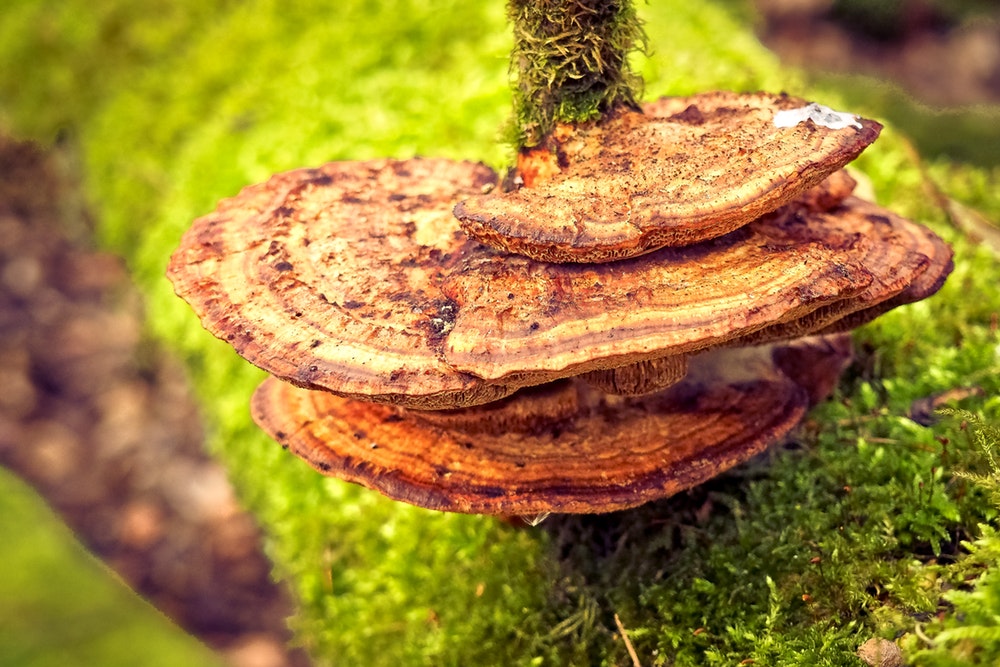
Are Red Reishi Mushrooms the Key to Immortality?
Although they may be a fungus, they’re definitely the good kind! Reishi mushrooms have been used in Chinese medicine for over 2,000 years.Typically seen in modern times growing on decaying hardwood tree stumps throughout East Asia and North America, reishi mushrooms can be found in six different colors (purple, green, white, black, yellow, and red) and prefer tropical and subtropical climates. The red ones, however, are the only kind that interest us here. Red reishis are considered the “key to immortality” by some, and in China as “the divine fungus“, or the “mushroom of immortality,” (while others simply admire their many health-boosting properties). For most ailments that come with age are treated successfully by ingesting the reishi, such as high blood pressure, liver problems, arthritis, and others.
Another website on the subject elaborates that, “according to the ancient Taoists, the universe supports us when we are doing what we are meant to do in this life. Reishi helps us to fulfill our destiny. When we do what we are here for, we become “immortal” in that we leave behind the legacy we were born to impart to the world.” So there is another layer to the meaning of “immortality” of the reishis, but they can also promote physical longevity as well.
Known in Traditional Chinese Medicine (TCM) as an important adaptogenic herb, red reishis are used for disease prevention, and for helping the body maintain and restore balance after illness. Predominant in TCM is the concept of balance, and paramount to their philosophy is keeping the right amount of meditation, exercise, and nutrition to sustain optimal balance.
Red Reishis, or Ganoderma lucidum, are referred to in Chinese as Ling Zhi (zhi meaning mushroom and ling meaning spiritual potency) and considered particularly miraculous with regard to their health benefits since they are non-toxic immune modulators. This means they can adjust and regulate the immune system to optimal efficiency. And according to reishi.com, “When it is taken regularly, it can restore the body to its natural state, enabling all organs to function normally.
But what’s in them that specifically makes them so healthy?
Antioxidants are the top nutrition element found in reishis, and this is what makes them so great at fighting cancer. Add that to the fact that they aren’t known to interfere with traditional Western medical treatments for cancer, and you’ve got a win all around. They also promote liver function and detoxification, promotes heart health, reduces the risk of infections and viruses, balances hormones, and fights diabetes.
Additionally, red reishi mushrooms have tripterpenes as active ingredients, or ganoderic acids, which help alleviate allergies and improve oxygen utilization. They also enhance the body’s immune system and blood circulation, and can help with anxiety, hepatitis, insomnia asthma, and bronchitis. Dr. Axe explains in more detail that this is because they also contain “complex sugars known as beta-glucans, plant sterols that can act as precursors to hormones in the body” and recent studies suggest they “can lower inflammation and increase the release of natural killer cells (or cytotoxicity), which work to remove various types of mutated cells from the body.”
Also, although they are also known for their high blood pressure-lowering qualities, it is unknown whether they slow blood-clotting as well according to dietitican Lori Zanini. Since some doctors advise that the mushrooms can also cause blood thinning, those interested in taking them in any form should talk to their doctor first, especially if prescribed any form of anticoagulant or antiplatelet. However, it should be noted that most are able to take around 1.5 grams with meals after gaining doctor’s permission.
How can I get them?
Often found in dried form , as well as fresh or cooked, most will opt to ingest them without tasting them as they are quite bitter on the tongue. Tincture, extract, or powder forms ((usually in tea or supplement form) are most popular, as well as in soup.
You can make your own reishi tea by slicing or grinding the mushrooms into strips and boiling in water. After a few minutes, reduce to simmer for 1 – 3 hours. Finally, use a coffee filter (or something similar) to filter out the water for your tea. It will be bitter, so add honey or juice to your liking. You can also make “reishi spirits” by following the directions here, allowing for at least a month’s time for the concoction to sit.
As with any home remedy or health booster shared in my articles, please consult your physician before trying this in any form.
The Spiritual, Plant-Based, Musical Path of Julie Piatt

Come on in and meet Julie Piatt, also known by her spiritual name of Sri Mati, who through an intensive plant-based diet alongside a deep meditation and yoga voyage managed to rid herself of a large neck cyst — after doctors previously diagnosed it to be incurable. From this event, Julie went on to build further on her connections to plant-based food, cooking, and spirit, writing books including The Plantpower Way: Whole Food recipes and Guidance for the Whole Family (which she co-wrote with her ultra-endurance athlete husband, Rich Roll), This Cheese is Nuts, and Jai Seed. Plantpower Italia,a follow up toThe Plantpower Way, is also due to be released in the spring of 2018.
Excerpts from the Plantpower Way were cited in Spirituality & Health magazine, including such easy dishes as one-bowl meals like Grilled Veggie Salad, Superfood Pad Thai, Nachos, and Kelp Noodles and Purple Kale. In the attached article, Julie and Rich explained how one-bowl healthy meals are a typical feature in their household, especially at lunchtime. With four growing boys, this family needs their energy, and a macrobiotic meal of grain, greens, legumes, and whole foods such as avocado or yam (with sprouted beans and probiotic kraut to boot) helps to keep things running.
Julie didn’t just stop there, though.
Because some might say that when you’re connected to the Divine, your eating, exercise, and lifestyle habits overall begin to reflect it – and it doesn’t just stop with one event or endeavor. Piatt, known to her supporters and students as Sri Mati, put several elements of conscious living together to provide continuing benefit to herself and others by offering a culmination of “truth, food, and song at the altar.”
“We are the ones we’ve been waiting for.” – Julie Piatt
More specifically, this means she offers an assortment of things on her website. These include podcasts on meditation and other forms of “living a life Divine” on her “Divine Thoroughline”, food discussion and recipes on a plant-based diet, original spiritually-oriented musical performances, a yoga series, and several types of retreats. According to the website, “The practices of yoga and meditation are divine gifts for humanity. These teachings give us the tools to live truly connected and expansive lives – Consciousness created each one of us for a specific purpose; to be and live our true authentic self in full expression is the greatest gift we offer humanity.” Julie is also a vegan chef, homeschooling mother of four children, does occasional speaking appearances, and is a regular contributor to MindBodyGreen.
The Divine Thoroughline, both internationally available and five-star rated, allows Julie to share what she sees as inherent in living a divine life, and has gained evident popularity through 350,000 downloads in only a single year’s time. Julie is often a frequent guest on her husband, Rich Roll’s, podcast as well.
Her original musical recordings, stemmed from an ancient humming form learned from a previous teacher, can be enjoyed on her 2010 debut album, “Mother of Mine”, as well as “Jai Home” from 2011, which included the musical talent of her two sons, Trapper and Tyler.
A Modern Mystic Raised in the Rough Terrain of Alaska
Growing up in Alaska wasn’t easy for Julie, as her spiritual journey began there as a young child. Often eating wild game her father brought home including even bear meat, Julie became born-again at age 10 and a drug addict at 12. She describes herself as a “modern mystic” and was finally able to consciously connect with her creative spirit in young adulthood. According to her website bio, she now draws upon the dark parts of her life to “recognize God in all life experiences inclusive of the seemingly dark and painful events that make up half of the human journey.” In addition, the site explains Julie is, “committed to stand for others and hold a safe place for them as they traverse their way along the darkened path of their own journeys.”
What can we expect from the future with Julie/Sri Mati?
Her website boasts of continuing retreats (even giveaways for some), an ongoing yoga series, more podcasts, books, and appearances. It further states that, “What you get with SriMati in all her endeavors, is a sermon or prayer which radiates the vibration of MOTHER, an energy that comes through her essence, her words and her music. After experiencing SriMati, you will feel blessed, healed and seen.”
The Secret Health Benefits of Peruvian Black Bojita Olives
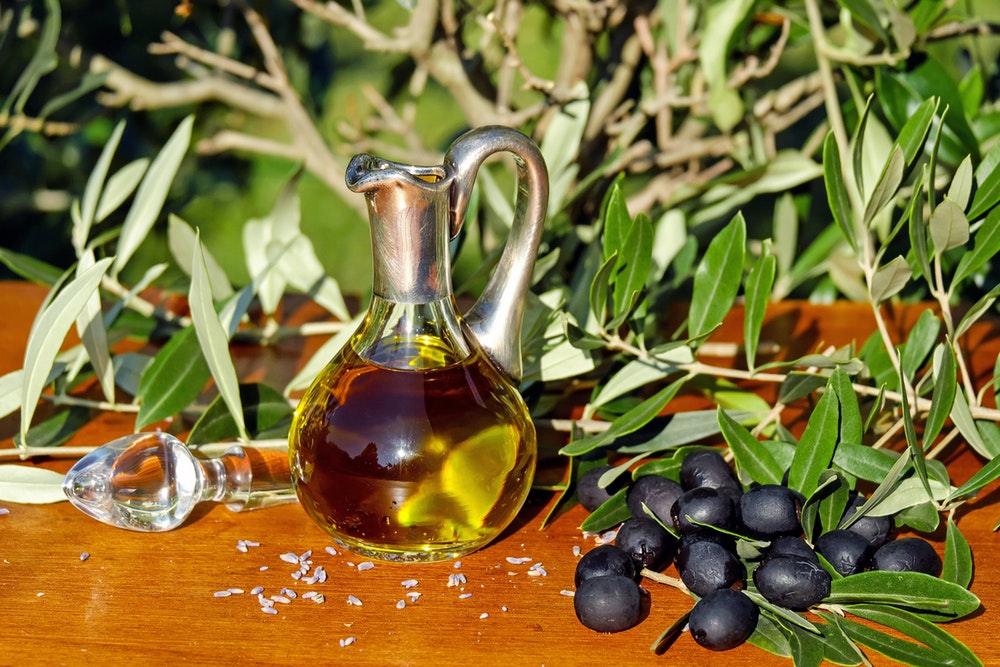
Looking for a way to keep brain-healthy fats in your diet without buying expensive supplements? Well, you’re in for a treat. Tasty and savory little botija olives may be just what you’re looking for – and they’re found in many health food stores or can be easily ordered online.
But I like my salty green olives. Why are these better?
Not only are these nutritious little flavor balls full of monounsaturated fat, but they’re also packed with calcium, vitamins A and E, selenium, oleic acid, iron, and antioxidants. They are often packaged raw as well, retaining optimal nutrition, while most other mass-produced types of olives are cooked beforehand. And while other olives found in most stores are cured with lye, these are naturally sea salt-cured, uniquely flavored, and picked fresh from the vine. To top it all off, they’re harvested at the exact time of ripening, unlike many fruits and vegetables such as tomatoes which are often picked green prior to ripening and later softened with exposure to chemicals in order to ripen. Naturally-cured and dehydrated versions can range in price and are provided by various brands to local stores or online.
Where do they come from?
With a long history stemming from origins in the Middle East, botijas are a fruit tree native to Northern Africa and the Mediterranean which are now found in Peru. According to some, the Conquistadors from Spain brought freshly-snipped olive tree branches with them on voyages to Peru, where they were planted and took hold in the similar climate. They now produce the rare and meaty bojita olives.
Lots of interesting health benefits
Most intriguing are the lesser known health benefits of such olives, which includes them being a stellar mucus reducer. They can break up excessive mucus in the body, clear up brain fog, and boost respiration. A natural anti-histamine, they also possess anti-inflammatory properties and have been used by holistic doctors to treat allergies.
These dark beauties can also provide insulation for nerve tissue and lubrication for the body from their 80-85% fat content. Additionally, they are bursting with cholesterol-lowering, bone-developing, skin and hair beautifying, and oxidative stress preventing properties.
How can I eat them?
If you’re not sure how to eat them, try them on crackers with a slice of vegan cheese, tossed in a Greek salad or grain mixture (like quinoa or brown rice), or served alongside fruit and nuts for an energizing snack.
If you want to get fancier with them, try them in place of the black olives in these savory dishes (they work in essentially any dish that does not require cooking in order to optimally retain their nutritional components):
Spicy Citrus Salad with Black Olives
Make an impression on guests or bring this along to the potluck picnic instead of the usual potato salad. Five different types of citrus make the olive flavor pop in this fresh and fragrant summer salad – and you can tell your friends the story of the bojitas while you serve it!
Creamy Goat Cheese Greek Zoodle Salad
Spiralized zucchini, five types of fresh produce and a tangy homemade dressing make this Mediterranean dish a stellar side for any summer meal.
The flavor of these Peruvian gems should blend perfectly with this Peruvian recipe – just be sure to add the the olives last after all has chilled appropriately prior to serving. You could also serve some extra ones alongside the dish for a tasty garnish.
A unique flavor combo of fresh watermelon, red onion, cubed cheese, and savory black olives make this a splash at the backyard barbecue. Plan on people grabbing seconds!
All the best in Italian flavors come bursting through with this version of a traditional favorite. Vegetarians and vegans can use the store bought type of pepperoni replacement or make the Minimalist Baker’s version of vegan pepperoni here. There are numerous vegan replacements for mozzarella cheese available within an easy search as well.
Toss everything into the food processor and voila! You’re done. Just ladle it into a pretty dish and decide which dippers you’ll use. Quartered pita bread, sliced firm veggies, homemade tortilla chips, and other cubed breads work well with this dip.
This one is easy peasy as well, with all 7 ingredients popped into the blender or food processor for simple prep. You’ll need to soak the cashews for some time first though, so skim through this one ahead of serving day to make sure you set aside enough time.
How to Make Healthy and Tasty Muesli
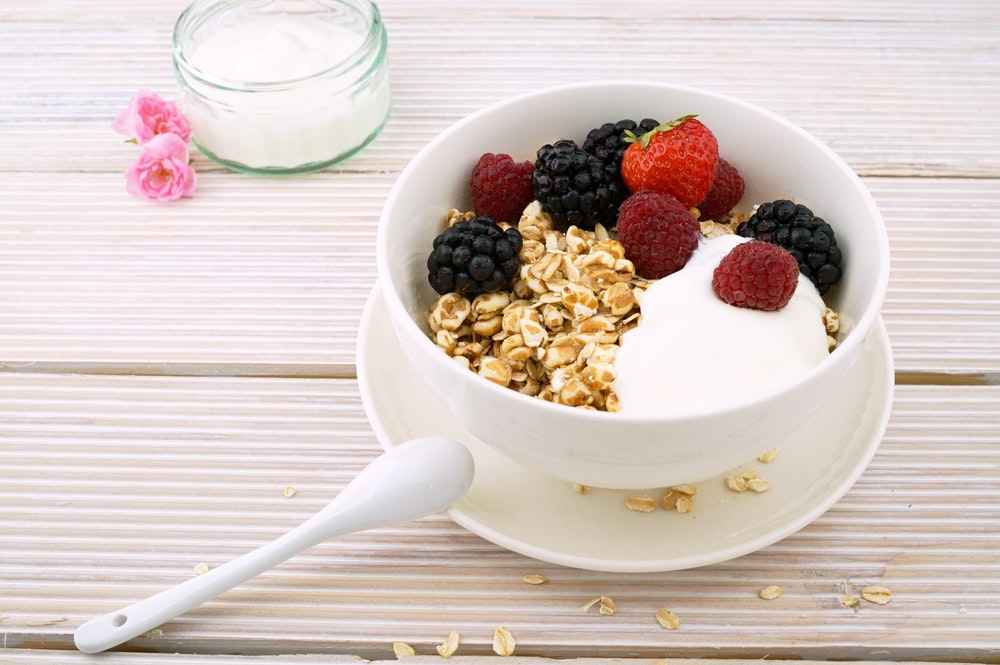
What is it and why should I try it?
Chances are you’ve tried muesli (similar to granola) from a box in the grocery store before, but have you ever considered making your own at home? Let’s take a look into what exactly is involved as far as ingredients for this dish, and then venture onto some food blogs to check out some easy recipes.
Wikipedia defines muesli (pronounced MYOOZ-lee) as a “breakfast or brunch dish based on rolled oats and other ingredients like grains, fresh or dried fruits, seeds and nuts, that may be mixed with milk (of various kinds), yogurt or fruit juice. Developed around 1900 by Swiss physician Maxmilian Bircher-Benner for patients in his hospital, muesli is available ready made in packaged dry form, or it can be made fresh. In Switzerland and Germany, it is also eaten as a light evening dish called Birchermüesli complet, or muesli with butterbrot and coffee with milk.”
A Healthier Version of Granola
According to the Minimalist Baker, muesli is “similar to granola, only it’s typically unsweetened, includes no oil, and it’s raw.” The baker goes on to explain that while raw oats may not be appealing, she prefers to roast hers for optimal flavor and texture. Others soak their muesli overnight to get a softer blend that’s easier on the digestive system.
In any case, there’s no real end to the number of possibilities you can work from in concocting your homemade muesli. As long as the ingredients include some variation of seeds, nuts, grains (including oats), and fruits (dried works best unless served fresh immediately), and they’re raw (for the most part), you’ve got a bonafide muesli blend. Now let’s check out what some of the experts have done for their recipes:
Recipes for Breakfast or Brunch
Overnight Muesli for a Hot Day
Soak your oats in apple juice overnight for this tasty treat, and then add all your favorites using this recipe as a guide. Keep it cool in the fridge until serving time on a hot summer morning!
Almond and Quinoa Swiss Muesli
With hemp hearts, quinoa, seeds and coconut, this version makes five cups, best served alongside fresh berries.
Orange, Coconut, and Blueberry Toasted Muesli
Orange zest, vanilla extract, and pecans give this recipe its kick. Serve over nut milk or in layers with yogurt and fresh fruit slices for a healthy breakfast parfait.
Minimalist Baker’s Toasted Pumpkin Muesli
This blog boasts of recipes containing the least number of ingredients (hence the word “minimalist”) and they’re all vegan. For this one, you’ll only need 9 ingredients (unless you add nut milk or extras) and should only take about 20 minutes to prepare. Make it in the fall, or anytime you’re craving pumpkin flavor!
Quick and Easy Nut-Free Muesli Bliss Balls
These are, as stated, easy peasy with all you need popped into the food processor and then shaped into balls and refrigerated. Fun for kids to make and eat!
Similar to the bliss balls, these are bars with quinoa, nuts, seeds, and cinnamon. Their creator recommends you refrigerate for 45 minutes, cut the batch into the size bars you like, then store in an air tight container to keep fresh.
With only healthy ingredients that together taste like carrot cake batter, you’ll love this one for breakfast, made into muffins, or tossed into smoothies. You can prep it for overnight muesli or serving immediately.
For desserts or special occasions:
This colorful and fragrant muesli blend can be served up on Christmas morn or given as gifts in pretty jars (just leave the fresh fruit out). Divine!
When you want to serve a healthy (sort of) dessert snack, give these a try. They’re a cinch to make and then pop in the freezer to set. (Especially pretty if you have dark chocolate offset with a pistachio muesli for topping, imo)
Mix up leftover muesli with your favorite fresh fruits (make it colorful with strawberries, blueberries, raspberries, etc.) and yogurt or vegan yogurt and then pour into pretty popsicle molds for a refreshing morning treat!
Apple Strudel Crunchy Muesli-Style
A muesli-fied version of Austrian apple strudel, this one involves a little bit of frying, but the large apple, oats, seeds and nuts keep it heart-healthy. Serve it up warm in pretty dishes for best results!
If you’re interested, the original Bircher-Benner recipe is here (and was ideally served fresh before any other parts of the meal).
What is Autoimmune Disease and How Can I Treat It?
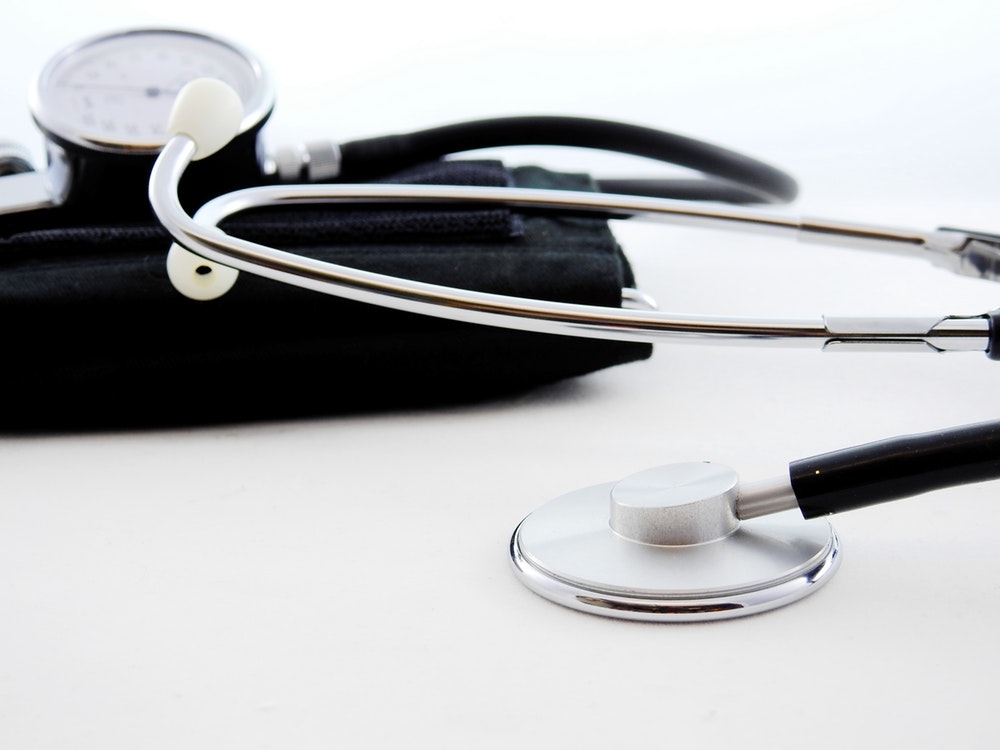
What is autoimmune disease and what are the symptoms?
According to Wikipedia, autoimmune disease is,“a condition arising from an abnormal immune response to a normal body part.”Since there are over eighty different kinds of autoimmune diseases and almost any body part at all can be effected, it can be difficult to pinpoint at first. The body’s immune system can either be overactive or underactive. In cases where the immune system isoveractive, the body attacks its own tissues, often damaging them. When it’s underactive, vulnerability to further illness and infection increases. Symptoms vary and may fluctuate, but typically involve some type of fatigue and perhaps a low grade fever. No cause is known for sure, but such autoimmune diseases as lupus are known to run in families while others like psoriasis, celiac disease, rheumatoid arthritis, inflammatory bowel disease, Graves disease, vasculitis, and multiple sclerosis may be triggered by environmental factors.
What are the standard treatments?
Standard medical treatment ultimately depends upon which type of autoimmune disease you have. If you’re diagnosed with an overactive immune system, treatment is generally focused on suppressing the immune system back down to normal levels. Immunosuppressants, nonsteroidal anti-inflammatory drugs, and intravenous immunoglobin may be used. Although symptoms of the disease may decrease with treatment, a full cure is rare.
Now for the alternative practitioners’ perspective.
From a more holistic standpoint, since most disease is caused by a combination of nutritional deficiencies and an overload of toxins, autoimmune diseases are approached the same way. According to Dr. Mark Hyman of the Functional Medicine Department of the Cleveland Clinic, “Autoimmune conditions are connected by one central biochemical process: A runaway immune response also known as systemic inflammation that results in your body attacking its own tissues.” So, by essentially finding and eliminating what is causing the inflammation in your body, most forms of autoimmune disease can be resolved.
The numbers are staggering
Hyman states that there are a staggering 24 million people with autoimmune disorders, 30 million asthmatics, and 60 million people with allergies in this current epidemic. With the symptom of inflammation, he knows that your body is “fighting something — an infection, a toxin, an allergen, a food or the stress response — and somehow it redirects its hostile attack on your joints, your brain, your thyroid, your gut, your skin, or sometimes your whole body.”
Looking at the whole person, not just the symptoms
When attempting to heal the body’s immune system, such functional medicine doctors would initially assess the diet and adjust as needed, typically removing anything genetically engineered, any refined sugars, and anything containing unnatural or chemical ingredients. Then the household would be considered as well, removing any cleaning fluids with toxic ingredients, examining drinking water for pollutants, etc. Emotional and other stressors and allergies would also be included in the assessment. Nutritional supplements would be provided if deficiencies were found and lifestyle changes made if necessary.
Leaky gut would be an initial specific consideration in such an assessment since the body often responds to an overload of toxins with inflammation — in this case, of the intestinal tract. When inflamed as such, sometimes undigested food particles slip through the intestinal walls and get into other parts of the body which puts undue stress on the immune system. If left unchecked for too long, it can result in such problems as organ damage and overall systemic inflammation.
Functional medicine approaches this with a unique mapping process unknown to traditional medicine. This process is conducted in order to identify a source of “molecular mimicry” says Hyman, which allows them to discern which molecule the cells in question are “mimicking,” or, loosely, the body’s inability to distinguish itself from itself.
Overall, if you’ve got trouble with autoimmune disease, Dr. Hyman recommends trying out his treatment regimen, listed here:
- Check for unknown infections of any kind, such as bacteria, yeast, Lyme, etc., and treat them with your doctor.
- Check for hidden food allergens with using recommended functional medicine methods designed to eliminate most food allergens.
- Get tested for celiac disease by requesting a blood test from your doctor. Do not change your diet before the test or it may alter results.
- Ask your doctor for a test for heavy metal toxicity including mercury.
- Optimize your gut’s microbiome using methods illustrated on the Functional Medicine website.
- Up the probiotics and vitamins C and D, as well as fish oil.
- Get sufficient daily exercise.
- Get into meditation, yoga, massage, or other relaxation work.
Now Hyman predicts if these steps are taken, you will have identified and treated the root cause of your illness rather than just masking the symptom with prescriptions or pain meds. Have you considered trying alternative methods for your autoimmune disease?
*Be sure to give your physician a visit first to make sure these treatments are right for you.
Exercises and Other Ways to Relieve Painful Sciatica

What is Sciatica and How Can I Treat It?
The Mayo Clinic defines sciatica as, “pain that radiates along the path of the sciatic nerve, which branches from your lower back through your hips and buttocks and down each leg. Typically, sciatica affects only one side of your body. (It) most commonly occurs when a herniated disk, bone spur on the spine or narrowing of the spine (spinal stenosis) compresses part of the nerve. This causes inflammation, pain and often some numbness in the affected leg.”
Since it can be extremely painful and incapacitating for many sufferers, some therapists and yoga instructors have compiled a series of beneficial exercises designed to help minimize the pain. Certified strength and conditioning specialist Dr. Mark Kovacs explains that he believes the best way to alleviate the pain from sciatica is to perform “any stretch that can externally rotate the hip to provide some relief.”
The top six exercises recommended by professionals include:
- reclining pigeon pose
- sitting pigeon pose
- forward pigeon pose (also referred to as the standard pigeon pose here)
- knee to opposite shoulder
- sitting spinal stretch
- standing hamstring stretch
Additional ways people can help relieve their sciatica pain is through:
*manipulation of trigger points: such as done by this leg brace (while some claim the brace is very effective, it is not guaranteed to work for all pain so use your discretion)
*pelvis balancing: Getting our pelvis in alignment can bring immense relief for sciatica sufferers especially, but others as well. The Elephant Journal explains that due to our digital lifestyles, most of us “spend a lot of time crouched in front of our various glow boxes, our low backs and hamstrings are weak and tight, unevenly pulling on the bones of the spine and pelvis. Therefore, most people have an irregularly rotated pelvis and possible clicking in their hips, low back, or knees because the joints are pulled out of alignment by imbalanced muscles.This can ultimately result in chronic pain, other areas of the body overcompensating and creating more issues, organ inflammation and muscle fatigue.”Yoga teachers and other therapists often address this with poses and additional stretching or exercises in their classes.
*acupuncture: Results from a Journal of Traditional Chinese Medicinejournal showed that out of a total of 30 sciatica sufferers participating, 10 saw symptom improvement and 17 were completely relieved with warming acupuncture treatment. Of the miraculous treatment, during which the needles are heated, Jingduan Yang, MD, of Thomas Jefferson University explains, “You can get relief as soon as the first session, though it takes about 12 sessions to see improvement.”
*massage: This likely won’t be the type of massage where you might fall asleep because you’re so relaxed. This kind of massage involves trigger-point therapy intended to apply pressure to inflamed or irritated areas of the piriformis muscle, lower back and glutes. According to Jeff Smoot from American Massage Therapy Association, patients should see results within four visits spaced 7 to 10 days apart or seek a different form of therapy.
*chiropractic care: Researcher Gordon McMorland, DC, from the National Spine Care Center in Calgary Alberta, explained of a 2010 study in the Journal of Manipulative and Physiological Therapeuticsthat, “Spinal manipulation may create a response in the nervous system that relieves pain and restores normal mobility to the injured area. It also reduces inflammation, creating an environment that promotes the body’s natural healing mechanisms.” According to the study, 60 percent of sciatica sufferers who didn’t get sufficient relief from therapies and then tried chiropractic care ended up with the same degree of pain relief as those who had surgery.
*epidural steroid injections: If other treatments aren’t helpful after a month, x-ray guided steroid injections may work. Says Raj Rao, MD, AAOS spokesman, “The hope is to reduce inflammation within that nerve branch. Because of concerns about side effects, such as loss of bone density, the epidural shots are limited to three a year.”
kinesiology taping: One interesting lesser known treatment is the kinesio-taping. As explained in this video, the taping should be completed on the patient 20 to 30 minute prior to physical activity. This method is said help provide pain relief and lessen inflammation and/or spasms associated with sciatica. The tape is believed to provide support and reduce the possibility of further injuring the back while relieving pain as you wear it. You can, of course, cut your own tape strips to the right size, and there are also Pre-cut pieces of tape are available for purchase. The taping treatment is not intended to be sufficient in and of itself, but rather to be used as an assistance to the wearer in being better able to perform the necessary rehabilitative exercises necessary to recover further from sciatica.
Muscle relaxants, prescription pain meds, topical preparations (like St. John’s Wort oil), applying heat or cold packs, herbal medication (such as devil’s claw), and surgery are, of course, also available to assist with pain if necessary.
*As with all my articles, please consult your physician before attempting any of these exercises or treatments.
The Purpose and Menu of a Colon Cleanse Diet
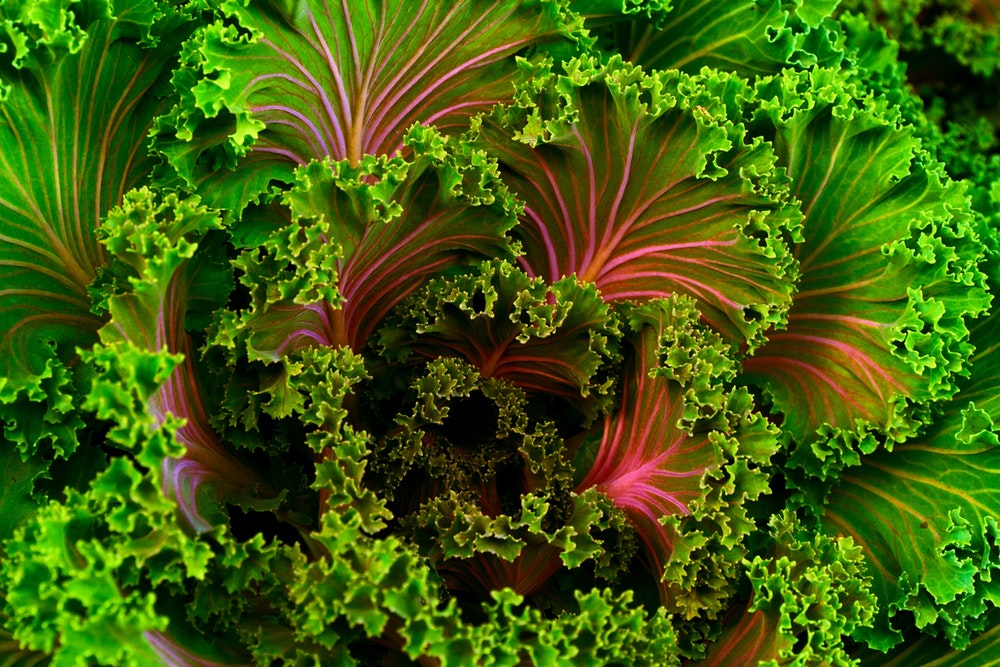
Death Begins in the Colon
It may sound far-fetched, but many people believe that “death begins in the colon.” You’re probably wondering what that even means. Originally uttered by holistic guru Dr. Bernard Jensen (who introduced several alternative healing methods to the English-speaking world, lived to be 93 years old, and frequently removed what many considered to be “incurable” diseases from people’s bodies over his lifetime), it primarily means that maintaining good health must first include a clean colon and hygienic diet. When the body expends too much energy on digestion and elimination due to a poor diet and an unclean colon, it takes precious energy away from nourishing and optimizing cells and other such crucial activities which are more important to the body. For that reason, Jensen and countless others strongly believe in the colon cleanse diet.
Kim Evans from Natural News states it slightly differently, “because diets are far worse than any previous time in history. They’re more chemical-ridden, more sugared, more meat-oriented, and more processed; this is a recipe for disaster in the colon, and throughout the body…The thing about a chemical-oriented, processed, highly-sugared and heavy meat-eating diet is that our bodies aren’t equipped to process all of those things. And if we can’t process them, often times we can’t eliminate them…This means that old fecal matter gets stuck inside our bodies and becomes corroded on our colon walls. In a nutshell, this is why constipation is common and drugs companies sell 1.5 billion dollars worth of laxatives each year…Inside our bodies, the non-eliminated filth begins to rot and putrefy…After years or decades of accumulation, this putrefied mess can absolutely lead to disease. It can lead to disease in the colon, or anywhere in the body. The colon walls are porous and what is trapped inside the colon will eventually leak into the blood where it can be transported to accumulate anywhere in the body. Where it accumulates will often be the deciding factor as to the symptoms, or disease, your body develops.”
How often should I do it and what can I eat?
While some advocate for a colon cleanse diet to be done at the change of each season, others believe once annually is sufficient. In essence, the diets consist of large amounts of dark, leafy greens, fruits and vegetables either raw or lightly steamed, no refined sugar, no refined white flour, whole grains, unsalted whole nuts and natural nut butters, no fried foods, no dairy (other than occasional cultured dairy with no sugar added), and only lean broiled or boiled meats or fish. No butter is to be eaten or added to foods, and no dressings other than vinegar or Braggs are to be used. Typically the diet leads up to a period of a few days when only steamed or raw leafy greens are consumed, then returns to the beginning foods once again. Dieters must stay dehydrated during this time and drink plenty of water, but no caffeine or sugary drinks of any kind should be consumed. Some herbal teas, unsweetened, are okay as well.
You don’t need to starve on this diet – quite the opposite
The idea, however, is not that you starve or get hungry on the colon cleanse. This is not the time to fast. Quite to the contrary, you are allowed to eat whenever you feel hungry as long as you choose from the specified foods and only eat until you are full — not overly full. Just imagine you are pushing these whole, raw, grains and greens through the colon, cleaning it all up on their way out. You need to add the right amount of roughage to cleanse a dirty colon, not go without eating! You may notice you do get less hungry as the diet goes on, however, and you are less attracted to unhealthy foods and crave much less sugar and fried foods. (After completing the colon cleanse, I did not crave unhealthy foods at all for weeks, until finally I succumbed and then my body returned to old habits again…which is why some people opt for the seasonal colon cleanse — we are all human, and some of us may need to cleanse more often.)
Watch for signs of detoxification
The colon cleanse diet can last for several days, during which the dieter may experience symptoms of detoxification (meaning headaches or other pains or discomfort) and may need extra rest. For this reason, it’s best not to attempt a colon cleanse while working or busy. It’s optimally done during a period of vacation if possible, or otherwise during a time when you can sit down and put your feet up as needed. If you feel your symptoms are not what you expected or are especially worrisome contact your physician immediately.
If you prefer more specifics on what to each day of the colon cleanse, here is a detailed explanation with infographics for a seven day colon cleanse diet, including what to eat for each meal and all the supplies you’ll need. Although it may be a challenge to stick to such a diet, and you may feel lousy partway through due to the detoxification symptoms, you can look forward to feeling AND looking amazing afterward! Most people who tried the colon cleanse I did (it was for 11 days, and I am about 15 years overdue for another one…but I digress) experienced renewed energy at the end of it as well as weight loss (I lost 12 pounds on it), healthy, glowing skin, shiny hair and fingernails that actually grew (Mine rarely grew until I did a colon cleanse detox). So take heart if you feel like you can’t do it – just try your best and if you mess up, get right back into it. It’s better to do it partially than not to do it at all. Good luck!
*as with all my articles, please consult your physician before trying a colon cleanse diet or any other type of diet
